As parents start getting ready for back to school, it’s also the time when many parents start looking at and enrolling in extracurricular activities. I’m not the type of mommy who puts my kids in tons of after school activities, but I am really particular about where I put my kids.
As a longtime ballet teacher (much longer than I’ve been a mommy), I know the benefits of high quality after school activities. I’ve taught at many, many, many different dance programs all over the country and even abroad. I’ve taught at some really high quality, pre-professional programs and some less than stellar small studios but I gained something from every experience and more importantly, no matter the setting, my students learned how to dance as well as the discipline involved in being a dance student.
Referrals and suggestions from other parents are a great place to start, but remember that everyone has different criteria of what is most important when picking a dance studio.
As a ballet teacher and now Dance Mommy, here’s what I consider when picking a dance studio:
Look at the schedule
How often is each class offered? How many levels are there? Does the studio focus on one dance style or many? How long are the classes?
High Quality studios will generally:
- Focus instruction on one dance style with other supplemental styles and will offer many classes a week in the main style for the intermediate and advanced dancers. An emphasis on students taking many different styles and only one or two classes a week of each prohibits students from getting good at anything. It takes many classes a week of a single style to become proficient (especially ballet).
- Offer varied levels for each age group. Children should not be placed in a class purely by age, there should be multiple level options for each age group (with the exception of the youngest dancers)
- Have classes which are 45-60 minutes for young children and 90 minutes for advanced students. Classes that are too long for little ones can result in behavior problems and classes that are too short for older and advanced students indicate a lack of quality instruction.
- Do not offer combo classes, especially after the preschool years. Classes which are single-focused provide better instruction by placing students with the best teacher for each style and giving ample time for each style (by 6 children should be in single-focused classes).
Research the teachers
What is their teaching and performing experience? Have they taught anywhere else? Where did they train? Did they go to college?
High Quality studios will generally:
- Have adult teachers. Teenagers should generally not be teaching alone as they do not have the knowledge to safely teach. Along with a lack of complete training themselves, they also generally do not understand anatomy (especially that of young children who are rapidly growing and changing) or behavior management.
- Hire knowledgeable teachers who have varied teaching and performing experience, college dance degrees and/or are part of professional dance organizations. Just like anything else, the more experience, the better you can expect someone to be.
- Use teachers from varied backgrounds. While it may sound great when a studio employs it’s former students but what this really means is that ALL the teachers are going to teach the same. Just like anything in life, variety is good. Dancers these days need to be versatile and the best way to become a versatile dancer is by training with many, many different types of teachers.
- Utilize each teacher’s strengths. Most dance teachers are really good at teaching one or two styles and are usually best with a specific age/ability group. Studios that use a few teachers to teach a lot of things are generally going to be lacking in their instruction somewhere.
Take a tour of the studio
Are there windows for observing? Is it clean and well-kept? What kind of floors are installed? What kind of sound system do they have? Are there any instruments?
What to look for:
- A lack of windows for observing classes (or windows that are covered) always make me wonder why they don’t want people watching. Yes, parents crowding around small windows can be distracting for young children, but teachers should be able to manage the class’s attention. For older kids, what are they trying to hide?
- Cleanliness is key since dancers often wander around barefoot and in some styles are required to roll around on the floor.
- Look for studio floors that are raised above the lobby/hallways floors indicating a sprung floor which is essential to injury prevention when jumping. Floors should be hardwood or marley (vinyl flooring specifically for dance, usually laid in long panels). Be weary of tile, laminate and concrete floors which can all be dangerous and are not made for dance.
- High quality ballet studios will often have pianos in the studios indicating live accompaniment and studios with a good reputation for modern/contemporary dance may have live drummers. If live accompaniment is not used, a quality sound system is important since it allows the teachers to easily adjust the music as necessary for each class (adjusting tempo, cuing for rehearsals, having ample volume for the open space, etc.)
- Show up during class times and take in the atmosphere. Is the front desk staff friendly; are the parents hanging around and what is their behavior like? Do you see yourself fitting in with the other parents and families?
Watch a performance, read through the performance program and/or look at the pictures 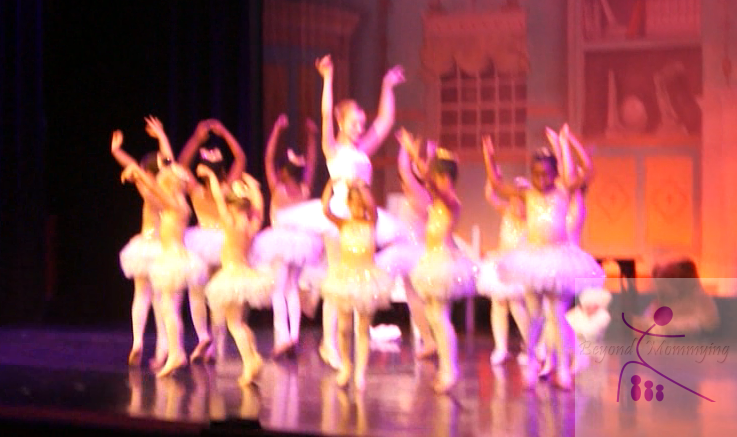
How many performances are there? How long are the performances? What are the costumes like? What kind of music do they use? Do the teachers dance on stage with the children? How long are the dances? How many dances does each class/dancer do?
Remember, performing should be fun! Things to keep in mind:
- How you feel about the costumes and music selections. How a studio represents their students on stage says a lot about the atmosphere and philosophy of the studio. Studios that use age inappropriate costumes, extremely expensive costumes, vulgar music or music that doesn’t match the dance style may place emphasis on the wrong things (such as the “look” rather than proper technique, teamwork and discipline).
- The time commitment at show time. Performances that are extremely long (2 ½ hours is okay, anything over 3 is too much); put young children in multiple dances; spread the dancers out throughout the whole show (as in your ballet dance in 2nd and your tap dance is 2nd to last); or do too many performances in a short period of time (in addition to run-throughs and dress rehearsals) can all put a strain on your child making them too tired and/or agitated to enjoy the experience.
- Children should know their dance without a teacher doing it with them. If students can’t do their dance without teacher assistance either 1) they are too young to be on stage or 2) the dance is too hard. Even if a teacher isn’t on stage, check for the class looking to the side of the stage indicating they are following a teacher off stage.
Look at the total cost
How much is tuition? Is there a registration fee?
Other expenses to look at:
- Uniforms. Many studios now require their students to buy leotards, tights and sometimes even shoes directly from them. While this is not necessarily a sign of poor quality, it is an added expense since their specific items will almost always be more expensive than buying yourself from a local store or online catalog.
- Performance Fees. If you plan to have your child perform, make sure to inquire about the performance fees before committing or you may be in for an unexpected big expense come springtime! Many studios require you to buy expensive costumes (one for each class; sometimes two for preschool combo classes), minimum number of pricey recital tickets and/or ads in the program all on top of a “performance fee”.
Other opportunities
How many performing opportunities are there each year? Does the studio attend conventions or competitions? Does the studio offer master classes, bring in guest teachers or do workshops?
Things to consider:
- Older students should have multiple opportunities a year to perform. And while more than one performance opportunity a year is good for younger children as well, make sure class time is not being used entirely for rehearsals.
- Is there a performing company or completion team? A lot of high quality dance programs will offer additional opportunities to their children through participation in a performance company or competition team which is usually by audition or invite only.
- Do you want to do competitions? I personally don’t really believe in competitions. While dance is indeed athletic, I believe it’s artistic aspects come first and aside from the extremely prestigious ballet competitions, dance should be about teamwork and sharing the art, not competition or being the best (only an individual best). BUT if you want to participate in competitions, look for studios that offer participating in competitions and research the quality of the competitions attended.
- Will your child get the opportunity to work with different teachers through conventions, master classes, workshops and/or guest teachers? As mentioned before, variety is key to becoming a great dancer as is taking class with great teachers. Working with different teachers also helps students learn the discipline, etiquette and hard work which is required to be successful in the dance world.
Ultimately, the decision of picking a dance studio comes down to what you want out of your child’s dance education and what is important to you. You and your child should both feel safe and comfortable with the environment (both inside and outside the dancing space).
Read about my journey as a Dance Mommy (and as a Dancing Mommy!)

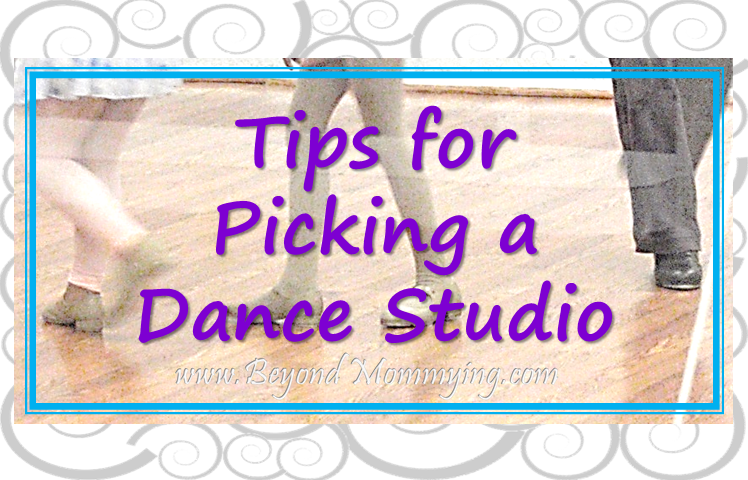
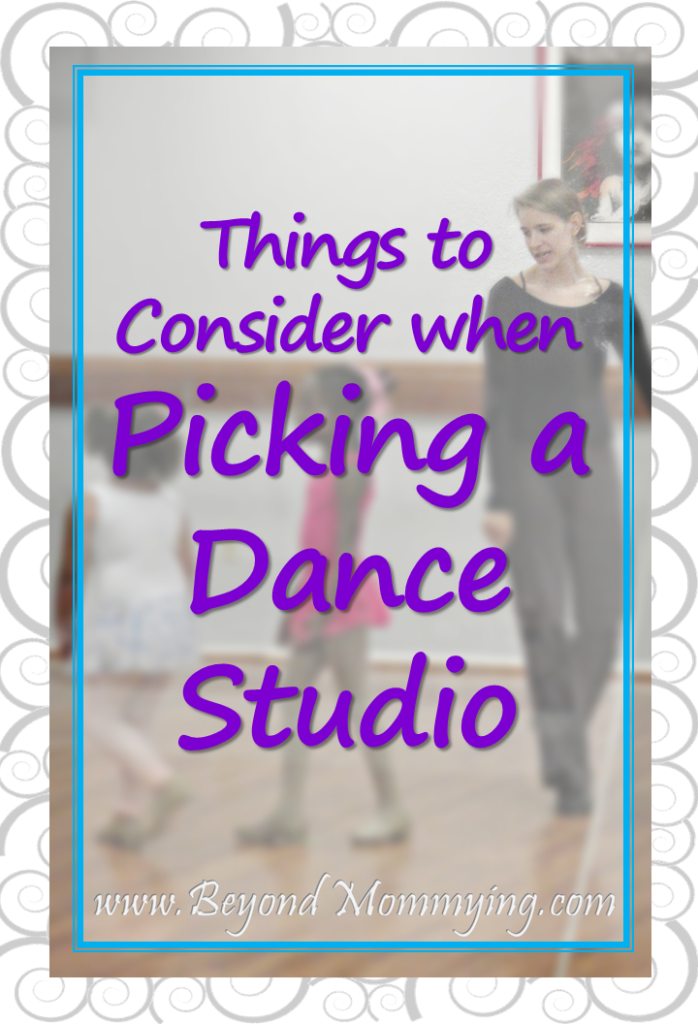
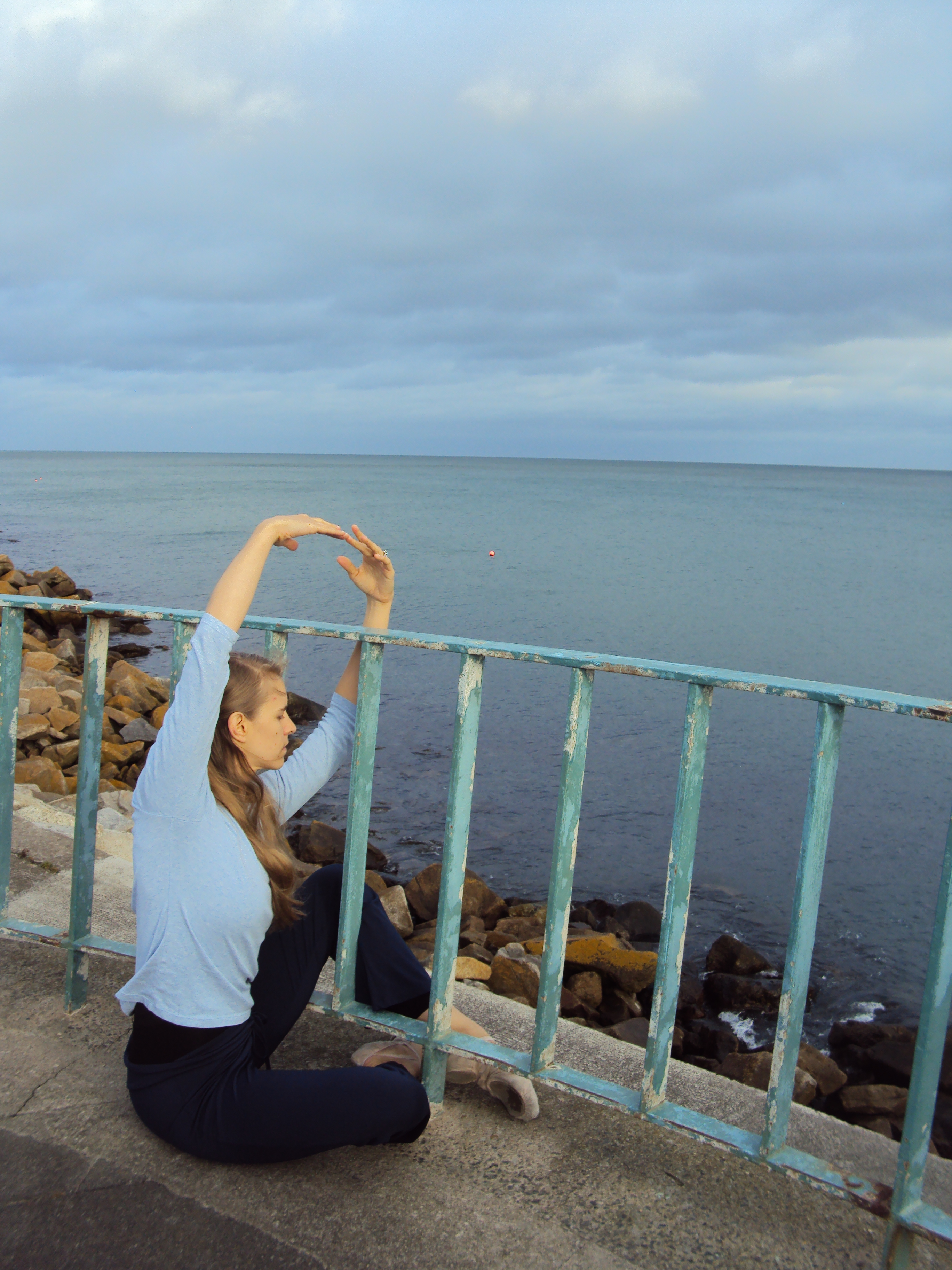

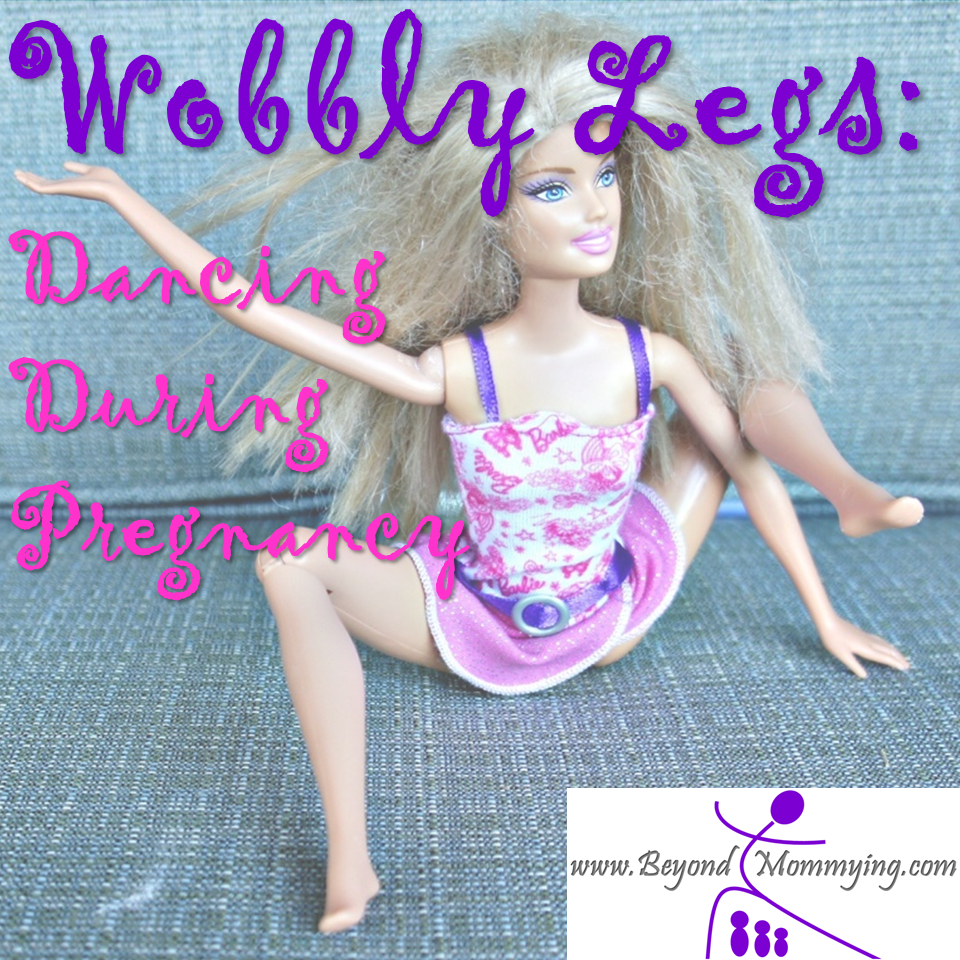

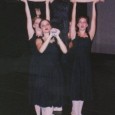
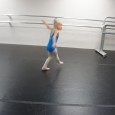
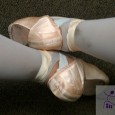
I danced all growing up, and my daughters have been wanting to try it out as well. However, finding a studio can be tricking, and for that I really appreciate this article. I really like that it focuses on the quality of the teachers, and the tell tell signs of someone that is well trained or not. I want my daughters to have the best experience, and I think this will help! Thanks for sharing.
Thanks for stopping by June, I’m glad you found my suggestions helpful!
These are some great tips, and I appreciate your advice to find a dance studio that offers forty-five to sixty minute classes for children. My daughter has been talking about starting dance lessons, so I need to find a good place for her to learn. I’ll definitely look for a studio that offers classes that aren’t too long or too short. Thanks for the great post!
Thanks, Lillian and good luck on your journey as a “dance mom”!
I did not know that studio floors should be raised above the lobby floors in order for them to indicate a sprung floor which is essential to injury prevention. Making sure that they are doing everything to prevent harm to the dancers would be important. I would imagine that meeting with the best teachers you’ve researched and getting a chance to know them would help you find the best one for you to work with.
Tiffany, while it’s not a strict rule, generally sprung floors are raised. Depending on the style and level of dance, having a sprung floor may not be as important but anytime a dancer is going to be executing a lot of jumps, especially large leaps, sprung floors help absorb the impact protecting the dancer’s body similar to the way a gymnastics floor or a rubber running surface does.
I love your points, but I do disagree with one point. I think combo classes past 6 are okay. There is so much ballet technique that cannot begin until a child is 8. Working in 5th position, for one, should not happen until 8 years old because it can cause damage to the hip sockets as the child’s bones develop. I personally keep kids in a ballet/tap combo until 7/8 because it allows for work on basic ballet tech – straight legs, pointed toes, balance, etc. But the tap instruction really helps develop a strong sense of rhythm. At 7/8 they move to an hour of ballet with an optional jazz/tap combo. It allows a slow growth in the number of hours they dance a week while giving them the strong technical backgound and the fun style in jazz. Just something to think about. You need to evaluate the whole curriculum of a studio, not just look at the class names and types. Find out why the set up is what it is. You may be surprised. :)
I completely agree with the developmental aspects of dance training as you mention, Melissa. But I think past 5 or 6 years old, half an hour of technique a week (in any style) is just not enough to make progress. More time in class doesn’t mean they need to be doing more advanced work just that it gives them more time to cover all aspects of the genre rather than skipping over entire areas or jumping around between steps instead of practicing steps regularly.
I like how you said that you should look at how you feel about the costumes and music selections picked by the dance studio. My youngest daughter wants to dance ballet professionally but she hasn’t had much practice yet so we need to find a new studio that she can get lessons from. I wonder if there are any professional ballet dancers nearby who offer lessons that would be willing to teach her.